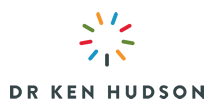I am yet to meet a leader who wasn’t overworked, under pressure and time-poor.
Increasingly, they are being asked to deliver more and more with less and less.
I nod with empathy at how hard they are working.
Yet I am amazed that so many of them are not doing anything to change this situation.
Perhaps leaders see this as a badge of honour or they feel so overwhelmed that they just accept the status quo.
Perhaps they are so concerned with demanding productivity improvements in everyone else that they have literally no time to improve their own performance.
The purpose of this blog therefore is to outline a better approach to improving individual and group productivity based on what I call the six Ds.
1. Delete
The first step for any leader is to decide what they can delete from their to-do list.
Perhaps it is a report that no one reads anymore or a presentation that could be given monthly rather than weekly.
Work for many leaders just seems to incrementally add up and every now and then a time-conscious leader should review everything they do and delete what is not relevant along with anything that fails to add value.
2. Decline
I am surprised at how many leaders find it difficult to decline, for example, a meeting request.
Meetings eat up an incredible amount of time and when I have asked managers what they achieved today they often complain that they did not reach their goals because they were caught up in meetings all day.
If this is the case why not decline some or most of the meeting requests?
If the meeting is not of value to the leader then don’t attend, or if the purpose of the meeting is not clear then decline the invitation.
A leader’s time is a precious asset and should be guarded at all costs. Leaders do not waste money so why should they waste their time?
3. Delegate
This is an ‘oldie but a goodie’. If there is work to be done and it cannot be deleted (i.e. it is deemed valuable) and it cannot be declined then perhaps it can be delegated.
Leaders cannot do everything and the best leaders know what to delegate, when to do it and to whom.
For the best results, leaders should agree with the person they are delegating to what exactly has to be delivered and leave the how to them.
4. Decide
Ultimately, how a leader invests their time is based on making a decision.
The nature of leadership is decision making. It is not procrastination or over-analysis.
One of the major criticisms of the former Prime Minister Kevin Rudd (version 1.0) was that he could not make a decision and to make the situation worse he felt that he had to make every decision.
Decision making is a skill which can be improved with practice and experience, but it can never be shirked.
Decision making is all about ensuring that the high-priority goals are identified and sufficient time is allocated to achieving these.
5. Design
Another approach to improving productivity is to redesign an existing process, project or activity.
Start with the ultimate goal, for example I need this report by the 10th of each month to make an informed decision, and then design back to the start.
If this report is completed by the 10th what needs to happen before this etc.
Continue this step-by-step approach until the entire process has been redesigned to deliver a better outcome.
Remember the process serves the outcome, not the other way round.
6. Destroy
A busy leader has to continuously review their entire productivity performance and delete, decline, delegate, decide and design.
But sometimes even this is not enough.
What is needed is a complete destruction of what exists at the moment.
For example, I have seen so many marketing, brand and business plans that are an incremental extension of last year’s approach.
This is fine if the results are on or exceed budget but not so helpful if the results are way below what needs to be achieved.
In these cases a much better approach is to destroy what has gone on before and start with a blank piece of paper.
In this way the brand or business plans will more accurately reflect the urgency of the current situation.
Improving productivity is one of the key challenges of leaders today.
Only by improving the productivity of their own performance can leaders expect others to accept this challenge.
The six D’s framework can help each and every leader and manager in your organisation to deliver more and more with less and less and still feel energised and engaged.
* First appeared in Leading Company
